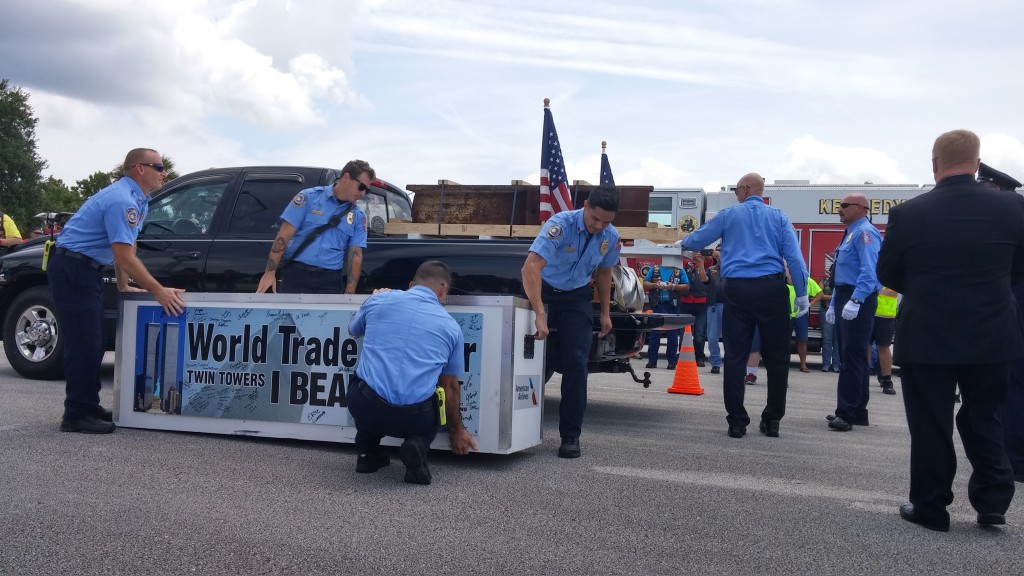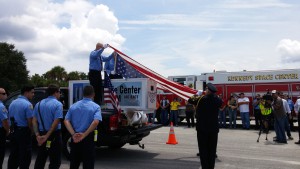The steel lattice column that will become the Crew Access Tower for Boeing’s CST-100 Starliner spacecraft continues its methodical rise at Space Launch Complex-41 where four of seven sections of the tower have been stacked.
Built four miles south, each section or tier, is being trucked to United Launch Alliance’s Atlas V launch pad where a crane lifts it into position. The tower will reach about 200 feet high when it’s finished.
Even after stacking is complete, the team will have plenty to do to outfit it for launch, including installing the elevator, white room, crew access arm and infrastructure lines. Since SLC-41 remains an operational facility while the tower is built, work on the tower is taking place between Atlas V launch operations.



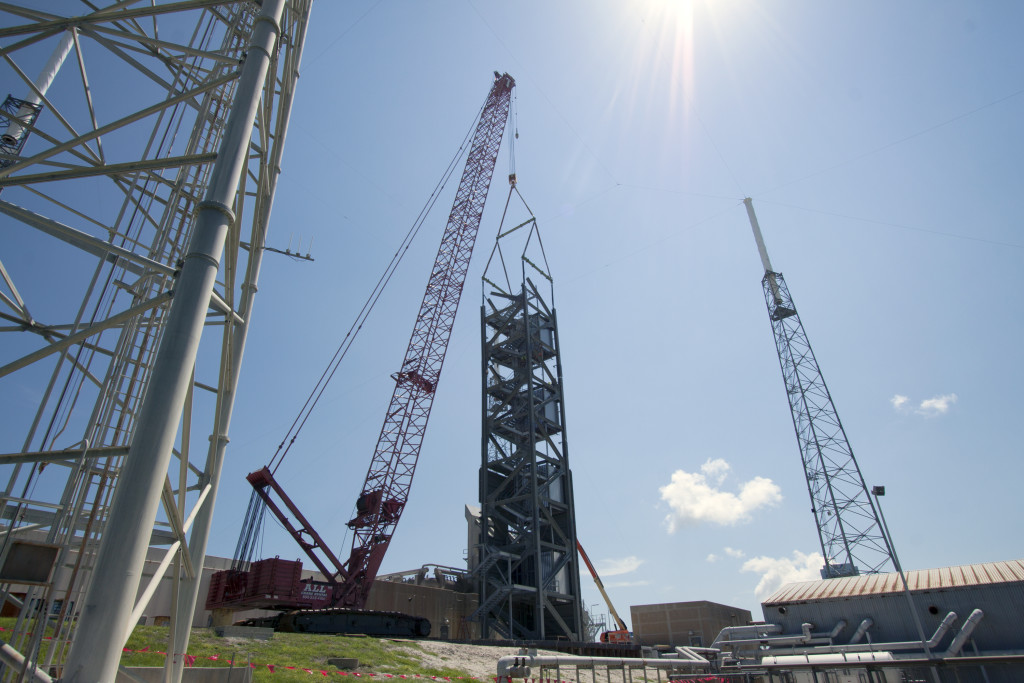
 Platform J arrived at NASA’s Kennedy Space Center last week and was positioned in an area outside the Vehicle Assembly Building where workers will prepare the platform and a host of others just like it for installation inside the massive processing building. The platforms will replace work stands that were installed in the VAB when it was first built in the 1960s.
Platform J arrived at NASA’s Kennedy Space Center last week and was positioned in an area outside the Vehicle Assembly Building where workers will prepare the platform and a host of others just like it for installation inside the massive processing building. The platforms will replace work stands that were installed in the VAB when it was first built in the 1960s.
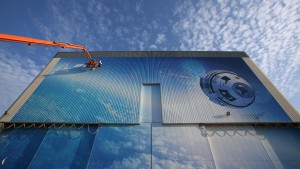
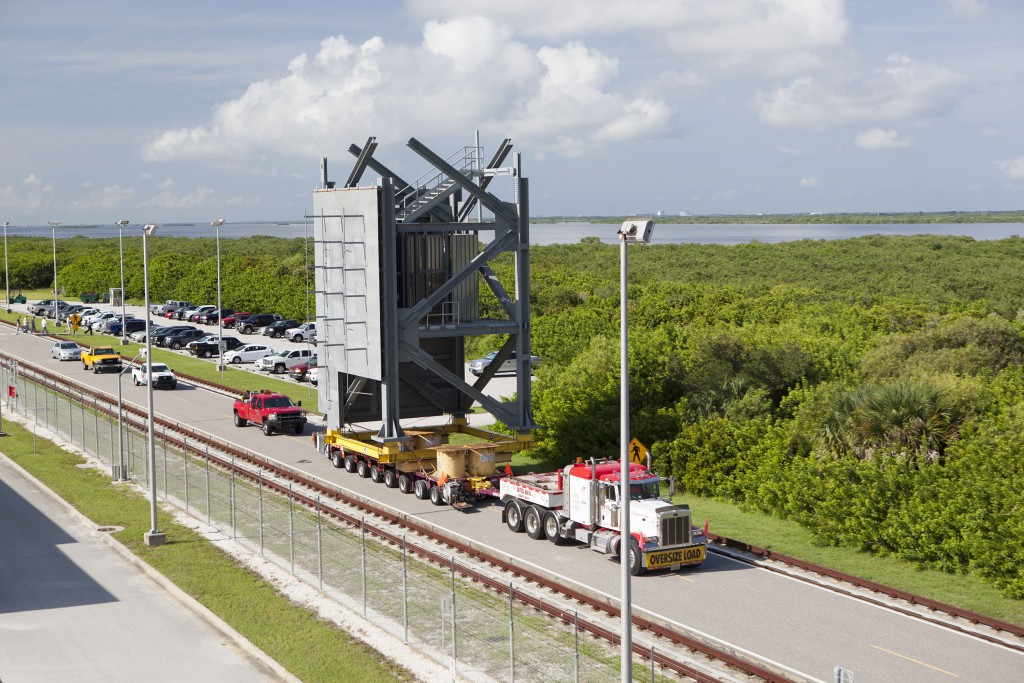 The first new Crew Access Tower at Cape
The first new Crew Access Tower at Cape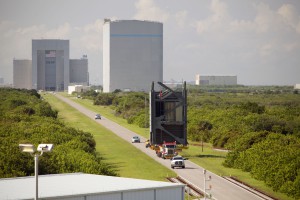
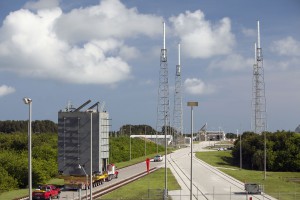 Canaveral Air Force Station in Florida since the Apollo
Canaveral Air Force Station in Florida since the Apollo 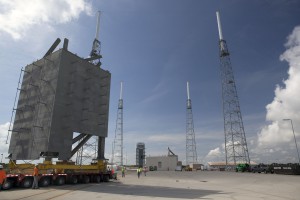 era will take shape at Space Launch Complex-41 in the coming days as workers moved the first two tiers from a nearby construction yard to the pad surface. The tiers will be lifted into place atop each other at the foot of the launch pad starting next week.
era will take shape at Space Launch Complex-41 in the coming days as workers moved the first two tiers from a nearby construction yard to the pad surface. The tiers will be lifted into place atop each other at the foot of the launch pad starting next week.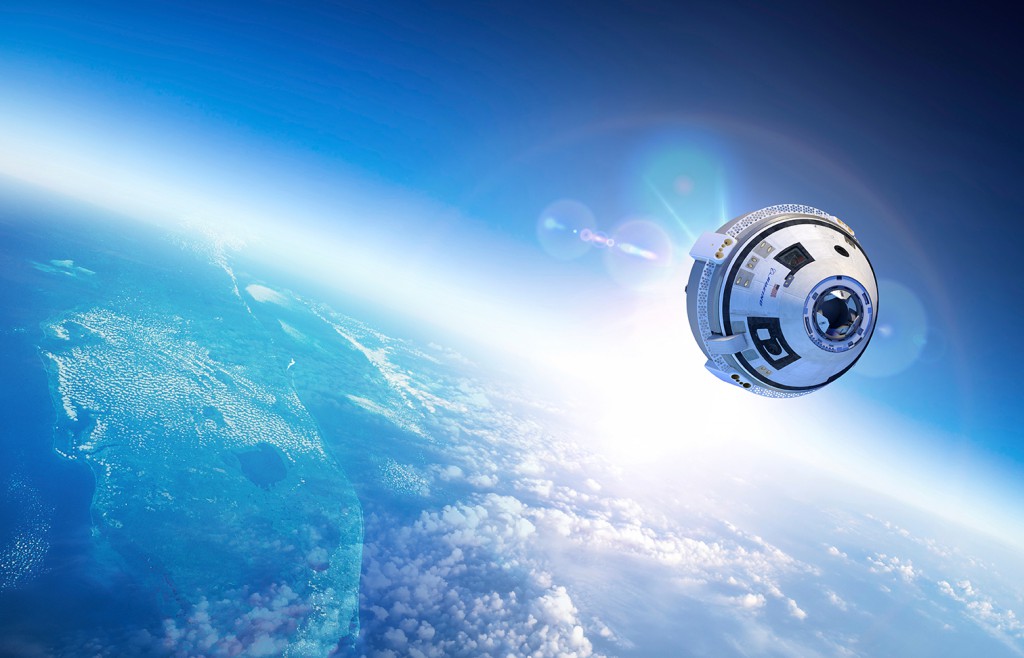
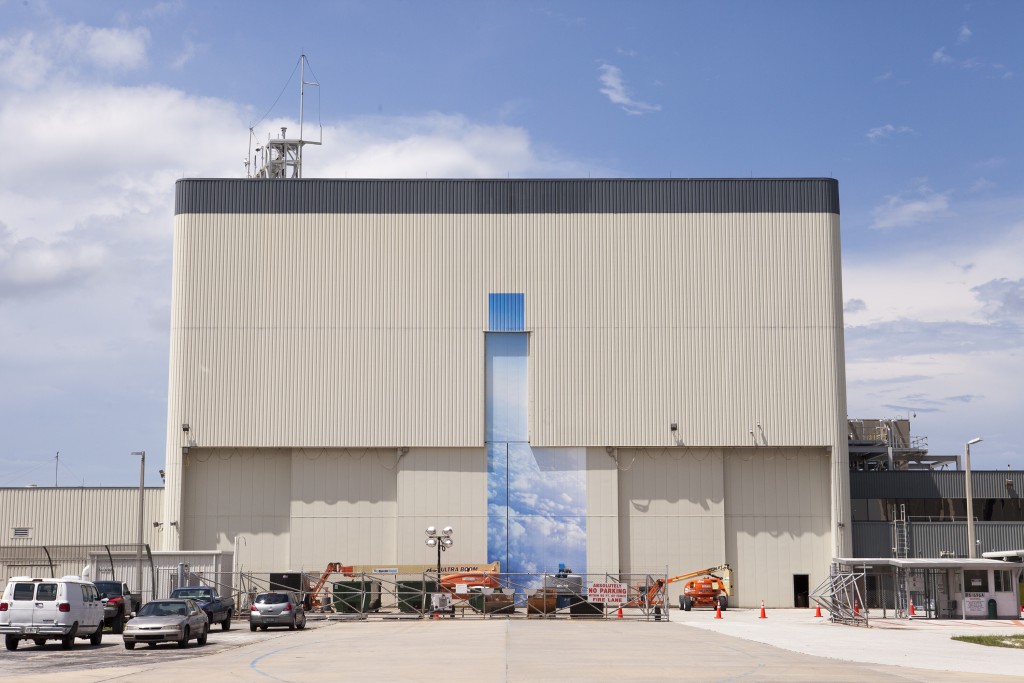
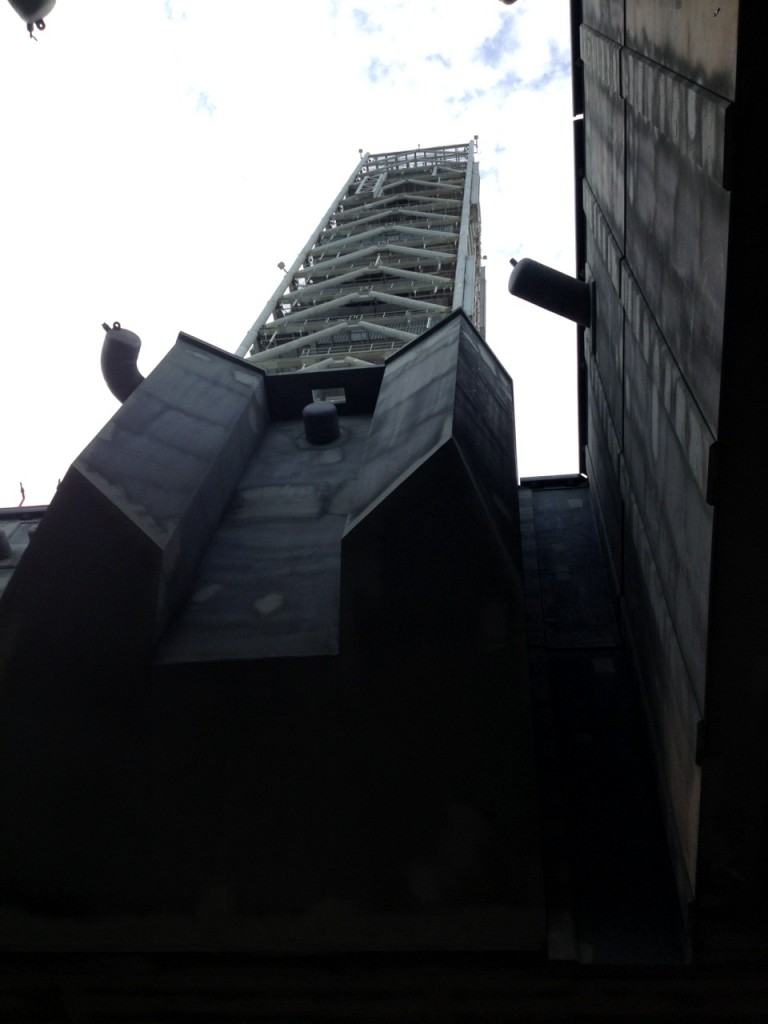
 The modified Mobile Launcher that will host NASA’s Space Launch System rocket was shown this morning to the news media following the completion of a series of modifications which strengthened the platform and tower to the demands of the booster that will be tasked with sending astronauts on a journey to Mars in the future.
The modified Mobile Launcher that will host NASA’s Space Launch System rocket was shown this morning to the news media following the completion of a series of modifications which strengthened the platform and tower to the demands of the booster that will be tasked with sending astronauts on a journey to Mars in the future.